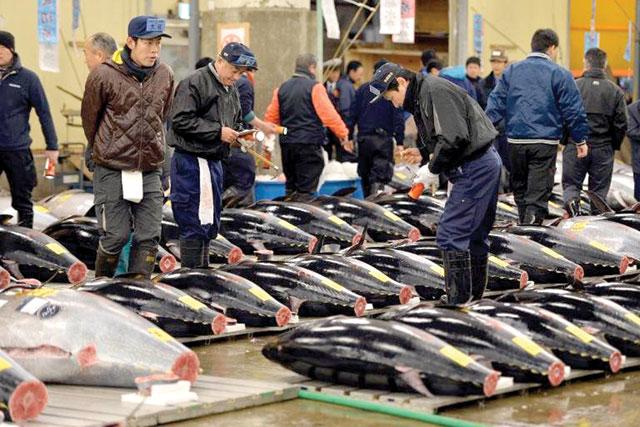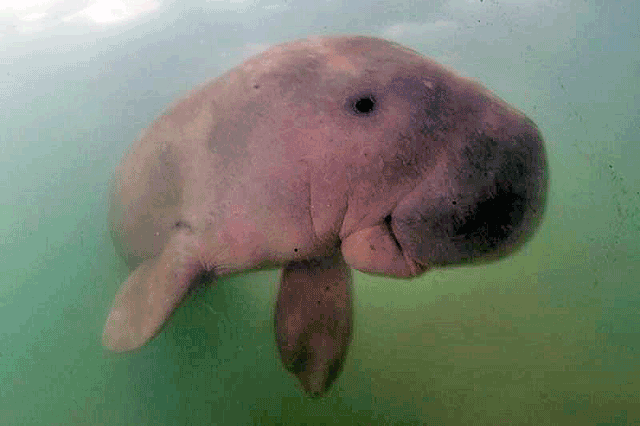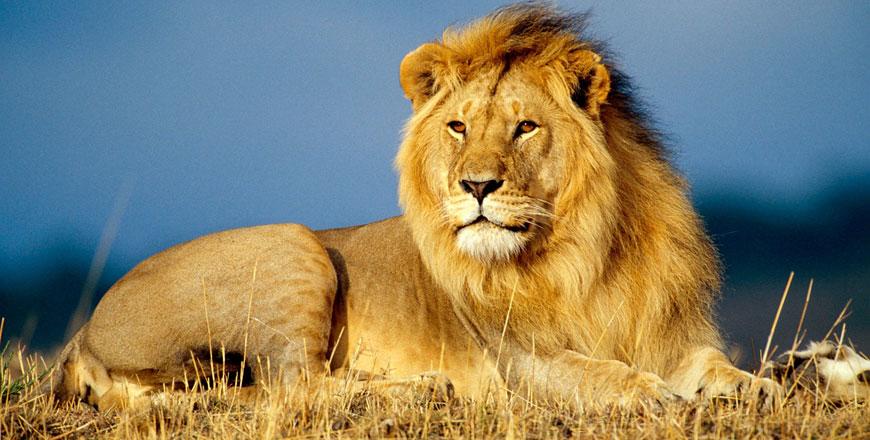You are here
Sashimi trend helps edge Pacific bluefin tuna towards extinction
By AFP - Nov 25,2014 - Last updated at Nov 25,2014

SYDNEY — The Pacific bluefin tuna, a fish used in sushi and sashimi dishes, is at risk of extinction as the global food marketplaces “unsustainable pressure” on the species and others, a conservation body recently warned.
The bluefin tuna joined the Chinese pufferfish, American eel, Chinese cobra and Australian black grass-dart butterfly on the International Union for Conservation of Nature’s (IUCN) “red list” of threatened species.
The updated list was released by the IUCN at its once-a-decade World Parks Congress in Sydney as it called for better management of protected areas, where some of the decline in species levels has taken place.
“Each update of the IUCN ‘red list’ makes us realise that our planet is constantly losing its incredible diversity of life, largely due to our destructive actions to satisfy our growing appetite for resources,” IUCN Director General Julia Marton-Lefevre said.
“But we have scientific evidence that protected areas can play a central role in reversing this trend,” she added.
For this year’s list, the IUCN assessed 76,199 species, with 22,413 judged to be under threat.
The Pacific bluefin tuna moved from the “least concern” threat category to “vulnerable” as the species is threatened with extinction due to its use in Asia’s sushi and sashimi markets, the Swiss-based group said.
As most of the fish caught are juveniles that have not yet reproduced, the population has dropped by 19-33 per cent over the past 22 years.
It called for fisheries to implement conservation and management measures for the Western and Central Pacific Ocean.
Chinese pufferfish ‘critically endangered’
The Chinese pufferfish, a Japanese delicacy and one of the world’s most poisonous vertebrates, was listed as “critically endangered” and its population was estimated to have plunged by 99 per cent over the past four decades from over-exploitation.
The American eel is reeling from the impact of climate change, parasites, pollution, habitat loss and commercial harvesting, as well as having been hit by the high levels of consumption of its counterpart, the Japanese eel.
The IUCN categorised the Chinese cobra as “vulnerable” with the population falling 30-50 per cent over the past two decades — another species hurt by its popularity as a food source.
“The growing food market is putting unsustainable pressure on these and other species,” the IUCN’s biodiversity head Jane Smart said.
“We urgently need to impose strict limits on harvesting and take appropriate measures to protect habitats.”
Another species added to the list was the Malaysian snail Charopa lafargei — named after the French construction giant Lafarge, which has agreed to try and limit its quarrying activities in the snails’ habitat — the report said.
Two species, the Malaysian mollusc plectostoma sciaphilum and the St Helena Giant Earwig, were declared extinct due to habitat destruction.
But there was good news for two amphibians in Colombia’s Ranita Dorada Reserve — both members of the poison dart frogs family — which improved in status and are now categorised as “vulnerable” due to conservation efforts.
The World Parks Congress, which will outline a global agenda for protected areas for the next decade before closing on November 19, comes a month after the member nations of the UN’s Convention of Biological Diversity met in South Korea to lay out a roadmap to halt species extinction by 2020.
The World Wildlife Fund said in its Living Planet Report published in September that there has been a 52 per cent decline in mammals, birds, reptiles, amphibians and fish overall from 1970 to 2010.
Related Articles
TOKYO — The latest scientific assessment paints a likely bleak future for the Pacific bluefin tuna, a sushi lovers’ favourite whose populati
MONTREAL — Dugongs — large herbivorous marine mammals commonly known as “sea cows” — are now threatened with extinction, according to an off
GENEVA — The mighty lion, reclusive cave crabs and the world’s rarest sea lion are among nearly 23,000 species at risk of dying out, a top c


















